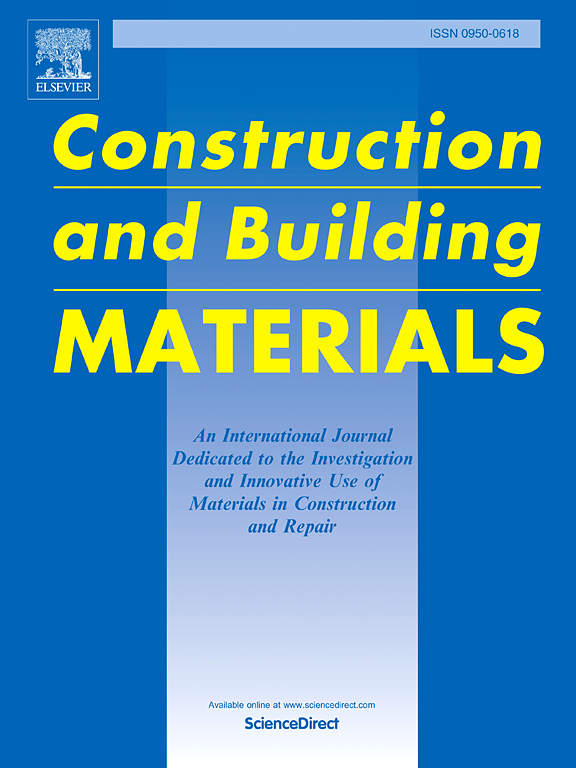Effect of boron doping and cooling condition on polymorph and early strength of dicalcium silicate
IF 7.4
1区 工程技术
Q1 CONSTRUCTION & BUILDING TECHNOLOGY
引用次数: 0
Abstract
In order to prepare dicalcium silicate (Ca2SiO4, C2S) with high hydration activity, the effects of boron doping and cooling condition on the early hydration performance of synthesized dicalcium silicate were investigated. The results showed that approximately 20 % of the α′H-C2S with high hydration activity existed in clinkers sintered with the addition of boric acid, which was negligibly affected by cooling conditions. In this study, even in the clinker prepared by the slow cooling method and without boron-doping, no water-nonreaction γ-phase was detected, which was mainly attributed to its smaller particle size. Clinkers prepared by the rapid cooling method exhibited smaller particle size and larger specific surface area compared with those prepared by natural cooling process. It was noteworthy that among the two controlled parameters, boron doping was the primary factor influencing the hydration process and mechanical strength. During the initial 28-day hydration process, the microscopic morphology of the hydration product underwent a sequential evolution, starting as a flocculent thin film, then transforming into a needle-like structure, and finally evolving into a short rod shape morphology. After 28 days of hydration, samples doped with boric acid or prepared by fast cooling underwent silicate chains polymerization due to the increase in hydrogen alkali concentration, leading to the formation of hydration products rich in Q2-type silicate chains. The compressive strength after curing for 28 days for samples doped with boric acid was more than twice that of the samples without boric acid doping. Clinker doped with boric acid and prepared by fast cooling method exhibited ultra-high compressive strength after 28 days of hydration, surpassing 50 MPa.
求助全文
约1分钟内获得全文
求助全文
来源期刊

Construction and Building Materials
工程技术-材料科学:综合
CiteScore
13.80
自引率
21.60%
发文量
3632
审稿时长
82 days
期刊介绍:
Construction and Building Materials offers an international platform for sharing innovative and original research and development in the realm of construction and building materials, along with their practical applications in new projects and repair practices. The journal publishes a diverse array of pioneering research and application papers, detailing laboratory investigations and, to a limited extent, numerical analyses or reports on full-scale projects. Multi-part papers are discouraged.
Additionally, Construction and Building Materials features comprehensive case studies and insightful review articles that contribute to new insights in the field. Our focus is on papers related to construction materials, excluding those on structural engineering, geotechnics, and unbound highway layers. Covered materials and technologies encompass cement, concrete reinforcement, bricks and mortars, additives, corrosion technology, ceramics, timber, steel, polymers, glass fibers, recycled materials, bamboo, rammed earth, non-conventional building materials, bituminous materials, and applications in railway materials.
 求助内容:
求助内容: 应助结果提醒方式:
应助结果提醒方式:


